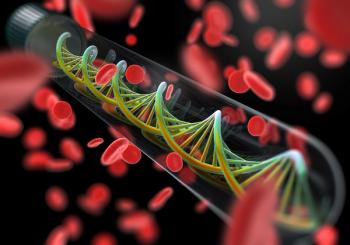
Oncology NEWS International
- Oncology NEWS International Vol 11 No 1
- Volume 11
- Issue 1
Switching to Low-Tar Cigarettes Fails to Reduce Risk of Tobacco-Related Diseases
WASHINGTON-Smoking "light" or "ultralight" cigarettes, which are promoted as less hazardous to health than regular brands, does not reduce a person’s risk of developing lung cancer or other tobacco-related diseases, according to a new
WASHINGTONSmoking "light" or "ultralight" cigarettes, which are promoted as less hazardous to health than regular brands, does not reduce a person’s risk of developing lung cancer or other tobacco-related diseases, according to a new report from the National Cancer Institute.
"There is no convincing evidence that changes in cigarette design over the last 50 years have reduced the disease burden produced by cigarettes," said David M. Burns, MD, professor of medicine at the University of California, San Diego, the report’s senior scientific editor.
The report finds that people who smoke "low-tar" cigarettes are actually likely to take in as much nicotine as smokers who use regular cigarettes. Because the amount of tar inhaled is relatively proportional to the amount of nicotine taken in, the exposure to carcinogens and other harmful chemicals will also equal that of regular-tar cigarettes.
Dr. Burns released the report at a press conference sponsored by four health organizationsthe Campaign for Tobacco Free Kids, American Cancer Society, American Heart Association (AHA), and American Lung Association.
He also said that the study was unable to determine the health effects on smokers who began with low-tar cigarettes and never used regular cigarettes.
Although lung cancer is the disease most commonly associated with cigarette smoking, AHA chief executive officer M. Cass Wheeler noted that of the more than 400,000 annual US deaths from smoking-related illnesses, nearly half result from cardiovascular disease.
Dr. Burns noted that 87% of cigarettes now sold in the United States are advertised as low in tar. "Clearly, smokers have bought into the illusion of harm reduction and the deception of low-tar cigarettes," he said.
The new study reviewed existing scientific literature and internal tobacco company documents made public as the result of several lawsuits brought by the states. Its findings and conclusion reverse several decades of advice to smokers by public health officials that they switch to cigarettes rated as low in tar and nicotine by the Federal Trade Commission (FTC) if they could not stop smoking.
"For decades, we told smokers, if you can’t quit, switch," said Campaign president Matthew L. Myers. "Today, we are telling smokers there is no alternative."
That previous advice was based on early and inadequate studies, according to Dr. Burns, that indicated low-tar products should reduce the risk and mortality from lung cancer.
Moreover, the public health community was slow to recognize two significant factors about low-tar cigarettes. One, people who switch to low-tar cigarettes change their smoking habits to compensate for the reduced nicotine. Two, tobacco companies engineered cigarettes so that smokers could inhale more nicotine- and tar-containing smoke than the machines used by the FTC to test for tobacco tars.
"Smokers smoke for nicotine, and if a cigarette delivers less nicotine, smokers compensate by taking larger puffs, more puffs per cigarette, and smoking more cigarettes per day to get the same nicotine," Dr. Burns said.
Machines are not addicted to nicotine, he added, "a fact the tobacco companies recognized early in their efforts to produce low-tar cigarettes. They worked hard to build into the cigarette an elasticity of delivery that allowed the smoker to receive whatever dose of nicotine he or she wanted from a cigarette, while keeping the machine-measured levels low so the cigarette could be marketed as low-tar, safer cigarettes."
A key technique in re-engineering cigarettes was to strategically place tiny holes in the cigarette filter. When machines puffed cigarettes, the holes resulted in a high dose of air and a low dose of smoke. When actual smokers drew hard, the holes’ design enabled a far higher dose of smoke than air.
"In addition, the holes are placed on the filter exactly where smokers can block them with their lips or their fingers, once again decreasing the amount of air and increasing the amount of smoke," Dr. Burns said. "From the tobacco industry’s perspective, you now have the perfect cigarette, one that could be advertised as delivering less tar while delivering a fully satisfying dose of nicotine.
Copies of Risks Associated With Smoking Cigarettes with Low Machine-Measured Yields of Tar and Nicotine can be obtained by calling 1-800-422-6237 or online at
Neal L. Benowitz, MD, professor of medicine at the University of California, San Francisco, served as co-scientific editor of the report.
Articles in this issue
almost 24 years ago
ODAC Sends Mixed Message on New Gliadel Wafer Indicationalmost 24 years ago
ONCC Certification Test Results Are Announcedalmost 24 years ago
Rituximab Ups Survival in Aggressive and Indolent NHLalmost 24 years ago
Topotecan Used in Aggressive Front-Line Therapy for SCLCalmost 24 years ago
Depsipeptide Shows Activity in T-Cell Lymphomaalmost 24 years ago
FDG-PET Useful in Newly Diagnosed and Recurrent NSCLCalmost 24 years ago
Adjuvant Anastrozole Superior to Tamoxifen in Huge ATAC Breast Cancer Trialalmost 24 years ago
ODAC Backs Adding HER-2 DNA Test to Herceptin Package Insertalmost 24 years ago
FDA and VA Plan Joint AIDS Studyalmost 24 years ago
Breast Conservation Increases With On-Site Radiation UnitNewsletter
Stay up to date on recent advances in the multidisciplinary approach to cancer.





















































































